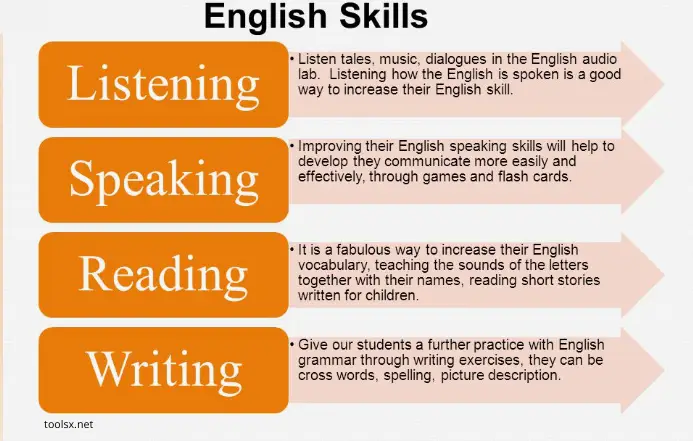Embarking on the journey of learning English as a second language is akin to setting sail on a grand adventure. It opens up new horizons, offering a treasure trove of opportunities, from career advancements to deeper cultural understanding. However, much like any voyage, it comes with its challenges and obstacles. This article aims to navigate through the waves of learning English, providing a compass for success. From mastering the basics to leveraging technology and overcoming barriers, we’ll cover it all. Let’s dive into the first leg of our journey.
Introduction
- Understanding the Journey of Speaking English as a Second Language
Learning English as a second language is not just about cramming vocabulary or grappling with grammar rules; it’s about connecting with a world beyond your own. The importance of English in global communication, academia, and business cannot be overstated. It serves as a bridge, linking diverse cultures and expanding personal and professional boundaries. Yet, for many, the path to proficiency is fraught with hurdles.
This article unfolds the map to language proficiency, marking out the strategies that can make the journey less daunting and more rewarding. Whether you’re struggling with pronunciation or searching for motivation, we’ve got you covered. So, let’s lace up our boots and step into the realm of English, a language that can unlock doors to endless possibilities.
Now, onto the essentials of starting this linguistic quest.
Key Components for Effective Learning

Embarking on the linguistic challenge of learning English requires a toolkit of essential components.
- Vocabulary Acquisition: Words are the building blocks of any language. Expanding your vocabulary is akin to gathering the tools you’ll need to construct complex ideas and express yourself clearly. Make it a daily habit to learn new words, but don’t just memorize them—see them in action. Contextual learning through reading articles, watching movies, or engaging in conversation can anchor these words in your memory.
- Grammar Mastery: Ah, the backbone of language—grammar. It can be the bane of learners, with its rules and exceptions, but mastering it is crucial for effective communication. Rather than approaching it as a tedious task, view grammar as a puzzle. Each piece connects to form clear, coherent sentences. Utilize interactive platforms or language apps like Duolingo Language App to make this learning process engaging and practical.
- Pronunciation and Accent Training: Rolling your Rs and elongating your vowels can be tricky, but clear pronunciation is essential for being understood. Accent training, however, is not about erasing your native accent; it’s about clarity and confidence in speech. Practice speaking with native speakers or use language learning software to fine-tune your pronunciation.
Stay tuned as we delve deeper into strategies for success in learning English as a second language in our upcoming sections. Together, we’ll explore how to turn challenges into stepping stones toward fluency. The journey of a thousand miles begins with a single step, and you’ve just taken yours.
Strategies for Success
In the pursuit of language fluency, certain strategies stand out for their ability to make learning both efficient and engaging.
- Immersive Learning Environments: Immersion is the gold standard in language learning. It involves surrounding yourself with the English language in various contexts. This could mean traveling to an English-speaking country, which might not be feasible for everyone. Alternatively, create an immersive environment at home by consuming English media, such as movies, podcasts, and books. Engage in conversations with native speakers through language exchange platforms. The key is to live the language, making it a part of your daily routine.
- Utilizing Technology and Online Resources: In this digital age, technology is a boon for learners. Online resources and apps offer personalized learning experiences, adapting to your level and pace. Platforms like Duolingo gamify the learning process, making it fun and rewarding. Additionally, online forums and social media groups can provide community support, motivation, and opportunities for language practice.
- The Role of Practice and Consistency: Practice makes perfect, a timeless idiom that holds especially true for language learning. Consistent practice over time solidifies your grasp of the language. It’s not about cramming a few days before a test; it’s about integrating English into your daily life. Write a diary, speak to yourself in English, or narrate your day’s activities in English. The goal is to make English a habit, not a chore.
Transitioning from the basics to implementing these strategies can make a world of difference in your language learning journey. Remember, language proficiency is not just about academic achievement; it’s about opening doors to new experiences, cultures, and opportunities. Stay tuned as we navigate through the common challenges learners face and how to overcome them, ensuring your journey to English fluency is as smooth as possible.
Overcoming Common Challenges

The road to language proficiency is rarely without its bumps. Understanding these challenges is crucial to finding ways to navigate through them.
- Cultural and Language Barriers: One of the most daunting aspects of learning English can be the cultural nuances and idiomatic expressions that are not directly translatable. These elements of language are often rooted deeply in cultural contexts, making them perplexing for learners. The solution lies in cultural immersion. Beyond textbooks and classrooms, immerse yourself in English-speaking cultures through films, literature, and interactions with native speakers. This exposure not only aids in understanding the language but also enriches your appreciation of the culture.
- Motivation and Confidence Building: Losing steam or feeling discouraged is a common hurdle. Maintaining motivation and building confidence requires setting clear, achievable goals and celebrating milestones, no matter how small. Remember, every bit of progress is a step forward. Engage with the language in ways that interest you, whether it’s through music, sports, or art, making the learning process enjoyable and personally rewarding.
- Finding Quality Resources and Support: With the abundance of learning materials available, it’s easy to feel overwhelmed or unsure about their quality. Focus on reputable sources and seek recommendations from experienced learners or educators. Don’t underestimate the power of community—joining language learning groups, forums, or clubs can provide invaluable support, encouragement, and opportunities for practice.
Confronting these challenges head-on with determination and the right strategies can significantly enhance your learning experience. As we venture into the next part of our journey, we’ll explore the tools and resources that can serve as your compass and map in navigating the world of English language learning. Stay tuned for practical advice on leveraging technology, community, and innovative learning methods to propel you towards fluency.
Resources and Tools for Learners

In this digital era, the resources at our disposal are more abundant and accessible than ever. Knowing which tools to harness can significantly enrich your learning experience.
- Recommended Language Learning Apps and Websites: Start with apps like Duolingo for foundational learning through gamification, making the process fun and engaging. For grammar and vocabulary, websites such as BBC Learning English offer extensive resources that cater to different levels of proficiency. For more advanced learners, platforms like Coursera and EdX provide courses designed by universities around the world.
- Community and Social Media Groups for Learners: The journey of learning English is one shared by millions worldwide. Joining online communities on platforms like Reddit, Facebook, or language exchange apps can offer support, motivation, and opportunities for practice. Engaging in these communities allows for learning from others’ experiences and sharing your own, creating a sense of belonging and encouragement.
- Books and Publications for English Language Mastery: Incorporate reading into your learning regimen. Start with children’s books or novels with simpler language, gradually progressing to more complex texts. Reading not only improves your vocabulary and grammar but also gives insight into the culture and idioms of English-speaking countries. For non-fiction, consider books on English language learning strategies or the cultural aspects of language, which can provide both practical advice and deeper understanding.
FAQs
- What is the best method to learn English as a second language? The “best” method varies from one individual to another, depending on their learning style, goals, and resources. However, a blend of immersive learning, consistent practice, and the use of digital tools and community resources tends to yield excellent results. Immerse yourself in the language through media, conversation, and reading. Practice regularly, and don’t shy away from using apps and online resources to reinforce your learning.
- How long does it typically take to become fluent in English? Fluency is a relative term and depends on various factors, including the learner’s dedication, prior knowledge, and the intensity of their study regimen. On average, it can take anywhere from six months to a few years to achieve functional fluency. The key is consistency and immersion; the more you engage with the language, the quicker you’ll improve.
- Can I learn English without attending formal classes? Yes, it’s entirely possible to learn English without formal classes. The digital age has democratized language learning, offering myriad resources online. From Duolingo for gamified learning to immersive experiences via media and books, there are countless ways to learn independently. Engaging with native speakers and participating in language exchange communities can also significantly enhance your learning experience.
Addressing these FAQs provides a glimpse into the common concerns of English learners, offering guidance and reassurance. As we wrap up our exploration of learning English as a second language, let’s move forward with confidence, equipped with the knowledge, strategies, and resources to navigate this journey successfully. Stay tuned for the concluding part of our guide, where we’ll encapsulate the essence of our adventure into English language mastery.
Conclusion
- Embracing the Journey Towards English Fluency
Embarking on the quest to learn English as a second language is a testament to your courage and commitment to personal growth. It’s a journey filled with challenges and triumphs, each step laden with invaluable lessons. Remember, language learning is not a race; it’s a marathon. The pace may vary, but persistence and resilience are key.
Reflect on your progress, celebrate your achievements, and set new goals. Learning English opens up a world of opportunities—professional, educational, and personal. It allows you to connect with people from diverse backgrounds, access a wealth of knowledge, and experience cultures in a way that would be otherwise inaccessible.
In this journey, remember that resources like Duolingo and platforms offering insights into English-speaking cultures can be your allies. Engage with the language daily, whether through reading, speaking, or listening, to continuously improve your skills.
Most importantly, embrace the journey with an open heart and mind. Learning English is not just about mastering a language; it’s about bridging cultures, fostering understanding, and expanding your view of the world. Your efforts to learn English as a second language reflect your willingness to step into the broader world, a commendable endeavor that promises a lifetime of learning and discovery.
As we conclude this guide, remember that the journey of learning English is as rewarding as the destination. Keep exploring, stay curious, and let the adventure of language learning continue to unfold.

